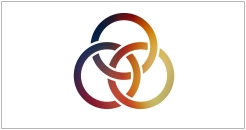 3 ways businesses integrate faith
3 ways businesses integrate faith
From an article by Business as Mission
Dr Min-Dong Lee, Professor of Business at Wheaton College's Center for Faith & Innovation (CFI) and colleagues engaged in a research project to explore the question, "How does faith manifest in businesses?".
With the rise of business as mission as well as the faith and work movement, more and more Christian entrepreneurs today believe they can integrate faith with their business and work. With remarkable openness, five Christian entrepreneurs invited CFI to scrutinize their companies focusing on identifying the presence and impact of faith within their organizations. Workplace leaders and employees were asked to describe the ways that they observed or experienced faith expressions in the workplace.
CFI identified three ways faith comes to life in these workplaces. The three dimensions of faith expressions are distinct in terms of how readily observable they are as well as how explicitly they are connected with faith. The three are:
1. Embodied Faith
The first dimension required little to no thought for most respondents to identify - this category included such things as the presence of a cross or the practice of corporate prayers. These symbols and practices are easily observable, and their meaning is explicit in that most people would interpret them as faith-based. This “embodied faith” gives tangible and visible form to faith.
For example, one firm displayed a mission statement that included “glorify God” on the wall. Another had a prayer chapel and crosses at headquarters. Embodied faith is also expressed through practice. Prayers, especially, stood out. A sales team member shared, “Whenever we have meetings, sales team or any of the meetings, we start with a prayer.” At another company, spontaneous prayers were routine: “We stop every now and then, get on the floor, and pray with each other. We know each of us has problems at home… We talk about it and pray with one another.”
But employees warned that crosses and prayers alone don’t cut it. As one put it, faith “can’t be hypocritical!” Embodied faith is just the surface; it needs deeper roots.
2. Operationalized Faith
The second dimension is less visible, and the meaning is not as explicitly communicated or understood as embodied faith. This facet, which is termed “operationalized faith,” manifests through formalized company policies and programs grounded in faith-based principles.
For example, all five companies dedicate a significant portion, often 10% or more, of their profits to charitable causes and employee care. Two of the companies created a “caring team” with a budget to help employees in crisis, offering grants for home repairs or no-interest loans for bigger emergencies. The caring team supports employee well-being beyond crisis intervention, covering personal and professional growth. This includes financial management, marriage counselling, and tuition reimbursement. Employees also volunteer for local and international charities, with paid time off for service.
A CEO explained it as a way of obeying the biblical command of loving neighbours. Employees also saw them as stemming from faith, “I think his [the CEO’s] faith lays the foundation for an incredibly generous company that takes care of employees very well, especially if they need it or they’re in hard times.”
3. Internalized Faith
The third dimension of faith expression is even more challenging to detect and articulate. This dimension of faith points to faith-derived values internalized by organizational members, becoming the norm in the organizations. This “internalized” faith is so subtle, it’s hard to pin down, yet unmistakable to those inside. One employee put it poetically: “It lives in the organization at large… [faith] informs and drives attitudes and approaches to problems.”
One of the recurring themes was respect or being valued as a person. Another was how leaders treated customers fairly and equally, regardless of their contract size.
The internalized faith is also expressed as “mercy” - a willingness to look beyond mistakes. A manager shared how they’d first dig into the why instead of just firing someone for multiple tardiness: “Are they walking to work? Do they need a ride?” Employees demonstrate this mercy principle by consistently applying these internalized values in their decision-making processes. Over time, these values become second nature, shaping how employees interact without anyone spelling it out.
These three dimensions of faith - embodied, operationalized, and internalized - are not independent. They go together. The core of faith integration in business is internalized faith, institutionally practiced through operationalized faith, and visibly expressed through embodied faith. These companies don’t flaunt a “Christian” label; they see faith as a foundational belief driving their actions, not a badge to wear.
Read the full article here.
Retweet about this article:
From an article by Business as Mission, 02/07/2025